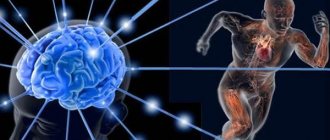The adaptation process is an important phenomenon in the life of every person. The ability to correctly navigate in certain situations occurs through regular training of the ability to adapt to the changing factors of human life. These can be social changes, natural and personal. All of them require timely adaptation for further successful living of a certain period of life.
Adaptation is an important skill
Types of adaptation, their characteristics
Adaptation, or adaptation to conditions, is a process that begins from the very birth of a person and continues throughout life. A newborn child adapts to environmental conditions, learns to perceive the world, people, and environment. Learning new gestures, movements, skills, for example, to stand on his feet and walk, he continues the process of physical adaptation.
The next step is social adaptation. Using the example of the same child, he is placed in a kindergarten, where he learns to interact with other children and acquires his first social skills. In a preschool educational institution (DOU), the child receives his first disciplinary experience and adapts to new rules. At school, this is the first experience of responsibility for one's work. So throughout life, a person gets used to certain conditions, becoming part of something whole, new.
In psychology, there are main types of adaptation - biological and psychological, where:
- Biological - adaptation to changing environmental conditions, be it air temperature, light level, atmospheric pressure and humidity; this also includes certain diseases, as well as various kinds of changes in the body, to which it gets used and continues to function relatively effectively;
- Psychological – a person’s personality adapts to social changes.
Social adaptation is important in the modern world, since a person needs to coexist with other people, be it new family members, employees and other people around. The ability to socially adapt allows an individual to gain new knowledge, build relationships, control his behavior, changing it to suit the situation.
Adaptation is a constant process of getting used to the dynamics of external conditions. A separate type of such human behavior is called “learning.” Adaptation of human “learning” has its own types:
- Reactive or the body’s reaction to changes in external factors, the process of addiction;
- Operant or “trial and error” method, “formation of reactions”, “observation”, i.e. the processes of gradual adaptation of the body to environmental conditions;
- Cognitive or “latent”, “development of psychomotor skills”, “insight”, “reasoning”. Involves observing the connection between two situations and assessing them taking into account existing experience.
Each of these types can be examined using examples of the work of different organizations.
The observation method is one of the first tasks of adaptation to a new workplace.
In organizations
In organizations in conditions of stable functioning of labor resources, where a constant flow of people circulates, the adaptation process is of high importance. These types of adaptation, such as learning by observation or reasoning, require a beginner to acquire professional skills through a course of lectures and seminars in his professional direction.
Adaptation specialists within a particular organization should conduct both personal conversations and general meetings with newcomers, assign a mentor to them (most often this is a person who leaves a given place of work) who would explain the intricacies of the chosen direction in the profession. Also, newcomers are supposed to carry out assignments to get to know the team. In addition, the newcomer goes through tasks, each of which is more difficult than the previous one, with the goal of gradually getting used to the environment and his responsibilities.
A separate popular way to introduce a newcomer to the team, as well as to further unite the team, is to hold special meetings and trainings, where team members are invited to take on the role of their colleague in order to achieve greater mutual understanding and mutual respect, which has a positive effect on the psychological atmosphere among employees.
In pedagogy and educational process
In pedagogy and educational institutions, adaptation of a child is a process that allows one to develop the habit of moving from one area of activity to another, from preschool education, for example, kindergarten, to school, college, or higher education institution. If a child does not meet the behavioral characteristics established by the educational organization, it is considered that the adaptation period was unsuccessful.
Human adaptation has its own types in the educational sphere. Thus, many students comprehend the learning process by trial and error, which is expressed in the selection of certain methods for solving a problem and eliminating ineffective solutions. An example of adaptation in the form of insight is the process when a child, over the course of several years, receives a variety of knowledge that needs to be put together when approaching the next stage of education, for example, these could be exams for admission to a university.
At school, children often adapt by trial and error.
In 1995, about 8% of the sample enterprises were on the verge of bankruptcy (suffering losses, liquidity indicators many times lagged behind the standard level).
About 48% survived primarily through passive adaptation, while 44% experienced a transition to active adaptation and development strategy (data from the Russian Economic Barometer - REB). [p.182] In contrast, groups of enterprises with a survival strategy primarily strive to help their member organizations survive difficult times. Their task is not so much active adaptation to market conditions, but rather maximum isolation from the market by closing economic ties within the group, preventing control over enterprises by the management corps and the transfer of ownership rights to new financial structures, maintaining close contacts with government agencies, lobbying with the purpose of obtaining benefits, privileges and closing the market from external competition. However, there is no clear division between the groups, and many competitive advantages are shared. [p.253] Active adaptation is the active desire of an employee, on the one hand, to quickly master the features of the environment, to understand and take into account in his actions the patterns of behavior of the team, on the other hand, [p.159]
Sustainability is a regulated and at the same time self-regulating process. It includes two sides - the dependence of the territorial system on the external environment and relative independence from it. This contradictory unity arises as a result of active adaptation, the development of the ability to overcome unfavorable disturbances of the external environment and absorb from it everything that contributes to the development of the system itself. [p.305]
The most typical work in this direction is [4]. This work rightly states that, in the most general form, adaptation can be defined as the process of automatic adaptation of a system to changes in external conditions that provide the most effective mode of operation from the point of view of the system’s purpose. However, later the problem of adapting the automated control system was reduced to the problem of adapting the software. It should be noted that passive and active adaptation are distinguished in [4]. Passive adaptation performed by the corresponding adaptation element is focused on parametric adaptation, active adaptation is focused on structural adaptation. The automated control system software can adapt to input parameters that describe the specifics of production (parametric adaptation). At a higher level of development of adaptive properties, software must be able to change its internal structure (structural adaptation). [p.11]
The fourth scenario is characterized by a soft level of globalization (the driving forces are under the influence of market forces, and the key players do not have a clear strategy for the development of the world system. Russia is pursuing a policy of active adaptation to the processes of globalization, aimed at obtaining strategic competitive advantages in the future through the development of the market for knowledge embodied in technology, at the expense of the energy market. [p.253]
The process of active adaptation to a new leadership position can be divided into three main stages [p.160]
Homeostasis and adaptation are two end results that organize functional systems. The intervention of external factors in the state of homeostasis leads to an adaptive restructuring of the body, as a result of which one or more functional systems compensate for possible disturbances and restore balance. First, the mobilization of a functional system sensitive to a given stimulus occurs, then, against the background of a slight decrease in the body’s reserve capabilities, a system of specific adaptation is activated and provides the necessary increase in the functional activity of the body. In hopeless situations, when the stimulus is excessively strong, effective adaptation is not formed and homeostasis is disrupted. The stress caused by these disorders reaches extreme intensity and duration, in such a situation the development of diseases is possible. [p.94]
In the process of working, a person pays for adaptation to production factors. Reward for effective work or optimal labor results. activity is called the price of adaptation, and often the retribution is formed in the form of overstrain or a long-term decrease in the functional activity of nervous regulation mechanisms, as they are the most easily vulnerable and responsible for the constancy of the internal environment. [p.94]
Of course, one can talk about our lag in the theory and especially in the practice of effective management, however, in my opinion, this would, by and large, be simply incorrect. After all, the management of Soviet organizations for decades was adapted to the requirements of a certain environment - the administrative-command system. And adaptation to this system, not only to the organizational, legal, economic mechanism, but also to its politics, ideology, and value system, took place very actively and, in its own way, was by no means unsuccessful. Fulfillment of the plan, often at any cost, instead of satisfying consumer needs, growth in the size of enterprises, increasing the volume of output without regard to improving its quality and economical use of resources, stability instead of dynamics, unification instead of diversity, subordination instead of initiative and freedom - these and other requirements of the economic system encouraged certain forms of management that made it possible to adapt to specific conditions. According to modern classifications, what was common before are bureaucratic, mechanistic systems for managing organizations. [p.14]
SOCIAL ADAPTATION is the process of a person’s active adaptation to a changed environment with the help of various social networks. funds. The main way A.s. is the acceptance of the norms and values of the new social. environment (group, collective, organization, region to which the individual belongs), the forms of social that have developed here. interaction (formal and informal connections, leadership style, family and neighborhood relationships, etc.), as well as forms and methods of objective activity (for example, methods of professional performance of work or family responsibilities). There are two forms of A.s. active, when an individual strives to influence the environment in order to change it (including those norms, values, forms of interaction that he must master), and passive, when he does not strive for such influence and change. The indicator of successful A.s. is a high social the status of an individual in a given environment, as well as his satisfaction with this environment as a whole (for example, satisfaction with work and its conditions, remuneration, organization, etc.). Indicator of low A.s. — movement of an individual to another social network. environment (staff turnover, migration, etc.) or deviant behavior. [p.4]
PERSONNEL ADAPTATION INDICATORS - measures of the level of adaptation success are divided into objective and subjective. Objective P.a.p. characterize the effectiveness of work activity, the active participation of employees in its various spheres are divided according to belonging to one of its types, for example, professional (compliance of qualifications with the requirements of the workplace), social-psychological (the degree of compliance of an individual’s behavior with the norms established in a given team) psychophysiological ( degree of fatigue, level of nervous overload). Subjective P.a.p. characterizes the employee’s satisfaction with the job as a whole or its individual manifestations; they are subdivided (similarly to objective ones) according to belonging to one of the types of adaptation and determine the employee’s own assessment of his attitude to the profession and qualifications of relations with the team of employees, with management; well-being, conditions and severity of work; understanding of the role of individual tasks in solving general problems of the organization. [p.258]
Decline in investment activity in the period 1992-1997. is a characteristic feature of the transition from planning and distribution to market relations. This phenomenon was observed in almost all Eastern European countries that carried out market reforms. This is due to many reasons, including the slow adaptation of enterprise management to market conditions. Having received almost complete independence, they reluctantly [p.179]
Thus, the main obstacle to adapting the experience of Western firms in the field of on-farm reporting is the absence at domestic enterprises of a management accounting system and its mandatory element - accounting by responsibility centers. We emphasize that it is precisely the management accounting system that is missing, since some of its elements are actively used in Russian enterprises, since without their use it is impossible to manage an enterprise with objectively determined decentralization of management. [p.460]
The role of finance in reforming the Russian economy is to economically stabilize the transformation of economic relations, adapt the financial system to market transformations, stimulate investment activity and solve social problems. [p.59]
Employment regulation is based on a synthesis of market levers and the active participation of the state in regulating the rules of business activity, the functioning of the labor market, social protection of citizens from the consequences of unemployment, and accelerating the adaptation of the population to the requirements of a market economy. To achieve this, a number of problems will need to be solved in the medium term [p.677]
The experience of creating AIS and AIT shows that only a specialist can most fully and skillfully describe the work being performed, input and output information. User participation cannot be limited to setting tasks; he must also conduct trial operation of AIS and AIT. While at the computer, the user can detect shortcomings in problem statements, adjust, if necessary, input and output information, forms for issuing results, and their execution in the form of documents. Participation in trial operation is not only a form of active training for the user to work on a computer and familiarization with software tools, but also the process of adapting the user to new working conditions, new technology, and new, increasingly complex equipment. Experience shows that a specialist should develop a completely different attitude towards work in the conditions of AIT, the creation of which provides for the maximum possible coverage of the functions performed directly by him with automated processing. [p.78]
If the enterprise’s indicators do not correspond to the optimal values of the criteria for the level and dynamics of production (criterion 1.1, 1.2 and 1.3), then additional information about real changes in production activities can be provided by data on the rate of renewal of the assortment, the share of new and modernized products, costs and results of innovation ( criteria 1.4, 1.5, 1.6, 1.7, 1.8). Together they characterize the activity of the enterprise associated with the adaptation of its production structure to current and future market needs. The indicator of the dynamics of product sales volumes at comparable prices works in the same direction, especially since the increase in sales volumes indicates not only the presence of demand for these products, but also the compliance of the quality of the enterprise’s products with the requirements of buyers. [p.196]
Adaptability. This is the most important property of an organization. The organization's adaptation mechanism to changes in the external environment and objective requirements for the company must be characterized by flexibility. Not only any minor elements of the organization are subject to transformations, but even its essential core - structures, processes, methods. They change the faster the higher the rate of change in equipment, technology, and business development conditions. Market orientation and customer satisfaction will remain key drivers of adaptation. An increasing number of firms will develop their reward and compensation systems based on the level of satisfaction of customer needs. The most complete reflection of the client’s requirements for a new product (service) will become the most pressing need. The company will not be able to function as a closed organization interested only in achieving its internal goals. Management will continue to focus primarily on its shareholders, but the interests of other equity holders will also receive significant weight in corporate governance. Firms will take a more active role in supporting cultural institutions and other traditional non-profit organizations. The importance of business ethics issues in other countries will increase. [p.23]
It should be noted that such a process of transformation is typical not only for Russian enterprises. In developed countries, most enterprises (firms) also experience serious changes in their situation related to the operating conditions of markets, which forces them to actively address issues of adaptation. Recently, the concept of strategic firm architecture has emerged. We are talking about the company’s response to changes in the external environment, i.e. its adaptation (Table 22.1). [p.318]
Since active-passive accounts are not used in foreign practice, the technology for processing them is not initially provided for in Western accounting automation systems. Therefore, for correct accounting using these programs, either their special adaptation to solving problems of this type during localization is necessary, or certain changes must be made to the accounting organization procedure. [p.265]
A number of publications are intended for specialists administering computer accounting systems and adapting them to the needs of specific enterprises. Company 1 is especially active in publishing such publications. They summarize the experience of creating and supporting configurations of the 1C Enterprise system developed by company 1, its partners and final [p.320]
The development of an enterprise's investment strategy at the present stage is based on the methodological approaches of a new management concept - strategic management, which has been actively implemented since the early 70s in corporations in the USA and most Western European countries. The concept of strategic management reflects the clear strategic positioning of an enterprise (including its investment position), presented in the system of principles and goals of its operation, the mechanism of interaction between the subject and the object of management, the nature of the relationship between the elements of the economic and organizational structure and forms of adaptation to changing environmental conditions. [p.173]
The essence of the proposed business (project). This section of the business plan gives an idea of the specialization and size of the company's activities or its new division. It reflects the characteristics of financial stability (if the company is already operating), indicators of liquidity, profitability and business activity. The section provides a detailed description of the features of this company, its strengths and weaknesses, the rationale for the chosen strategy and specific business goals. Various information is provided about the products (services provided), assortment, its main characteristics, differences from products offered by other companies, special attractiveness for potential buyers, main disadvantages and possible ways to eliminate them, the ability to adapt characteristics to market needs. It is also advisable to characterize the premises that the company has for the production, storage and sale of products, indicate whose ownership they are, and give their characteristics. You can supplement the section materials with data about the company’s previous activities and its results, existing experience in the chosen direction, existing long-term relationships with suppliers, etc. [p.148]
Foreign specialists in this situation act more like outside observers than as active assistant managers in project implementation. Even teachers from eastern Germany, where structural changes are most similar to ours, do not always adequately assess the current situation. This is apparently due to the fact that in Germany the transition to a market economy was primarily viewed as a process of social adaptation with appropriate resources and approach. In our country, the transition to the market takes place according to the strictest scheme, with an orientation not towards saving the weak, but towards supporting purely market strong teams that can further develop themselves. [p.294]
At first, exports were seen as a way to finance conversion, rather than as an alternative. In this sense, the wide Russian export of raw materials and semi-finished products in 1992 (which practically undermined the world aluminum market) can be considered a reaction to disappearing domestic demand. The military-industrial sector was the largest producer of such goods. Here, export was not only a way to obtain financing for the re-equipment of factories, but also their adaptation to market conditions. However, such export activity quickly aroused opposition from the West. A typical example is the aluminum market. The reaction of Western governments, and especially those that were already facing internal depression, is quite understandable, although restricting Russian exports of raw materials in general can only exacerbate the problem of Russian arms exports. [p.273]
Competition between audit firms forces them to actively fight for the quality of their services and be sensitive to the prestige of the company. The assigned legal responsibility for the results of audits does not allow auditors to issue biased information and predetermines the need to insure auditors and audit activities. Audit firms operate on the basis of charters developed and adopted by them. However, their activities, as a rule, are coordinated and directed by a centralized audit administration. In 1991, the Audit Chamber was created in our country. Its activities are aimed at a more active, orderly formation and further development of the institution of auditors, improving the quality of their work, including through adaptation to international rules and requirements. [p.58]
The main features of marketing as a system for managing trade and production activities. They reflect the essence of marketing, stem from its modern concept and imply the effective achievement of the goals of marketing activities. Basic principles of marketing 1. Production of products based on accurate knowledge of customer needs, the market situation and the real capabilities of the enterprise. 2. The most complete satisfaction of the buyer’s needs, providing him with means or a set of means for solving specific problems (an alternative principle is the production of goods and services with subsequent search for sales). 3. Effective sales of products and services in certain markets in planned volumes and on time. 4. Ensuring long-term effectiveness (profitability) of the production and commercial activities of the enterprise, which implies a constant supply of scientific and technical ideas and developments for preparing the production of market novelty goods. 5. The unity of strategy and tactics of behavior of the manufacturer in order to actively adapt to the changing requirements of customers while simultaneously influencing the formation and stimulation of needs. [p.164]
Results of system-scenario analysis and modeling of the behavior of the driving forces of the markets for energy resources, production, capital and knowledge embodied in technologies, as well as decisions made by key players depending on passive or active adaptation to the processes of globalization, analysis of the rhythms of Russian history, performed by A.I. . Ageev, B.N. Kuzykom, O.V. Dobrocheev and other researchers made it possible to create six scenarios for the development of the Russian energy market (Fig. 5.5). [p.252]
If the manager does not make active efforts to organize the adaptation of new subordinates, the latter may be disappointed due to the unrealization of their hopes, may consider that their behavior should be guided by the experience acquired in their previous job, or come to other incorrect conclusions about their work. The manager must also remember that some of what newcomers learn during their onboarding process may be a shock to them. A study of college graduates who went to work for a large automaker found that, unlike those who stayed with the company, many of those who left found that most job characteristics were worse than they had initially expected.24 [p.575]
LEGMATICIAN - a person distinguished (by his temperament) by a low level of mental activity, isolation, weak external expression of emotional states, inexpressive facial expressions, and calmness. F. has difficulty switching from one type of activity to another, and has difficulty adapting to a new team or environment. Feelings and moods are usually constant, which affects the tendency to perform monotonous and habitual actions. [p.417]
In general, the direction of reform can be presented in the form of a diagram (see Fig. 10.1). From the above it follows that the transformation of an enterprise during its reform into an effective economic entity essentially means its transformation into a viable, self-developing industrial structure. At the same time, reforming enterprises should take into account existing intra-industry competition. This means that it is necessary to determine which development model the enterprise chooses in relation to its competitors - passive or active, whether it belongs to the group of developing or crisis enterprises. The results of reforming an enterprise should be assessed from the perspective of the resulting level of adaptation of the enterprise to existing and developing economic conditions. At the same time, this will not happen if the reform is not linked to increasing the efficiency of the enterprise’s internal potential through the elimination of ineffective pro- [p.191]
SALES PROMOTION. NISS prices were determined based on a survey of potential consumers and are set at a level significantly lower than the prices of its main competitors. In addition, the company will actively use the method of providing goods to consumers with a guarantee of a refund to the customer, in case of refusal, within a week. One of the most powerful stimulating factors is that. that the company will provide linguistic adaptation of the product in accordance with the client’s nationality. Another incentive is the use of a two-year warranty period and the unconditional replacement of a faulty product with a functional one. Of course, the ability to provide a range of related services, including a comprehensive site survey, project development, installation and commissioning, will have a positive impact on sales growth. [p.852]
The basic requirements for the organization of a personality-oriented educational process are determined: analysis of the modern function of education in contrast to the traditional one, changing its content, inclusion of the student’s experience in working with scientific knowledge, taking into account the individual selectivity of the student to the type, type and form of program material, studying the development of the student’s personality in educational process, the implementation of special forms of communication of all the main subjects of the educational process, the creation of an adequate educational environment, including the preparation and conduct of lessons, the organization of classrooms, the active involvement of families in the process of adaptation of their children to a personality-oriented school, the use of a criterial base for assessing educational achievements that meet the goals and objectives of this educational process. [p.74]
Hedge fund managers and other speculators can trade currencies directly without buying or selling securities. Banks do this too, both on their own initiative and on behalf of their clients. Banks play a much more important role in currency markets than hedge funds, but hedge funds like mine should be considered to have played a negative role in the Asian currency turmoil. Because hedge funds tend to be more concerned with absolute rather than comparative results, they can be more active in influencing an accelerated trend reversal. Of course, this leaves them vulnerable when such a change is undesirable, but if a trend is doomed, it is preferable to change it sooner rather than later. For example, by shorting the Thai baht in January 1997, the Quantum funds managed by my investment company signaled that the baht might be overvalued. If the authorities had reacted correctly, adaptation to new conditions would have occurred earlier and less painfully. In fact, the authorities resisted the adjustment, so the fall was catastrophic. [p.94]
What is not a type of adaptation?
Types of human memory in psychology, classification of main types
Types of adaptation do not include a probationary period, if a person is not assigned a mentor or simply does not pay attention to him or is not introduced to organizational affairs. Without examples and a proper understanding of the company's operating mechanisms, a person is unlikely to have enough time to adapt to work on his own.
For your information. Nor are coercion and threats used to show who has a position of authority an adaptation. A person can get used to such an attitude, but this will not make his work effective.
Modern methods
Blue color in psychology - meaning, for whom it is a favorite color
Today it is believed that the adaptation process takes from 1 month to one and a half years. Each individual organization analyzes what kind of adaptation occurs and what types of adaptation are most effective. The most common method today is mentoring. So, a newcomer is provided with a person who is aware of organizational issues and nuances. Interaction with a mentor helps a newcomer quickly integrate into the natural conditions of the organization, which concerns not only professional behavior, studying forms and methods of work, but also getting to know employees and trusting relationships with them at the service level.
Another option for accelerated adaptation is training, or so-called coaching. Trainings can be either individual or group, where the latter show by living example the importance of positive collective relationships. In another way, this process is called a seminar, which is carried out in three different variations: in the classroom, via email or webinars (online seminar).
Coaching is training. A coach, who is also a trainer, has deep psychological and social knowledge and has a clear understanding of human behavior, in particular, in a certain organization. It is noteworthy that the coach may not be among the personnel of the organization, but he has enough knowledge and skills to transfer them to the newly arrived employee. Usually coaching is individual, i.e. the work is carried out personally with the newcomer.
What is adaptation?
What does the concept of adaptation mean? This is a person's adaptation to the environment. This is done at one of or at all levels at once:
- Physiological.
- Behavioral.
- Genetic.
- Personal.
This looks like a person changing his behavior in accordance with surrounding circumstances. The individual strives to maintain harmony in the conditions of the environment to which he adapts, plus the people who are in it and also adapt to it.
- Adaptation is the ability of an organism to maintain constant characteristics in changing environmental conditions.
- Adaptation is the process of getting used to changing circumstances in the environment.
Man as a social being undergoes adaptation at three levels: physiological, psychological and social. Sometimes they influence each other, and sometimes they are not reflected.
Many people talk about adaptability to life. Successful people are proud of this quality. In the literature, you can increasingly read about various kinds of people adapted to life. But what is meant by this phrase?
To answer this question, we should turn to a life example that clearly demonstrates the phenomenon of adaptability to life. Many people may notice that students who studied excellently in schools and universities occupy lower levels of professions than those who were famous for being “low students” during their school years. Cases when once beautiful women suddenly turned into “gray mice”, and successful men into poor people are no exception. Why is this happening? Why do some continue to maintain their status or develop, while others, on the contrary, degrade and fall from their pedestal as kings?
Everything is quite simple. The life of any person is divided into periods: infancy, childhood, school years, adolescence, student life, growing up, etc. Periods can also consist of life events: marriage, birth of a child, new acquaintances, change of place of work, separation from a loved one or starting a new love relationship. By periods we can understand everything that affects the way of life to a greater or lesser extent. Some periods are easily perceived by the individual, while others are difficult. For example, the death of a loved one is more difficult to bear than meeting a new partner whom you will see only once in your life.
So, every period that changes a person’s habitual way of life affects him. It is at this very moment, when a person’s life changes in the slightest way, that changes occur in his personality: he can remain the same, begin to develop, or, conversely, degrade. Simply put, the past lifestyle (period) helped a person to be successful and beautiful, and the new period does not correspond to the person’s usual actions. Everything that worked before has ceased to work, and if a person is unable to change his habits in accordance with changed circumstances, then he turns into a failure.
Many can attribute this to the following factor: previously a person had a goal for which he did something and developed, but when the goal was achieved, a new goal did not appear. Therefore, the person has lost his former ardor, activity or success. Added to all this is the loss of activity of a person who previously was constantly doing something and was passionate about something, but now, due to new circumstances, has become passive, not interested in anything.
This is why some “A” students work for “B” students when they become adults; This is why former businessmen cannot always start a new business; that’s why some former beauties become boring and “gray”, etc. Their lives have changed (they are no longer in school; there is no more business; the woman has reached marriage) and has moved to a new stage of its formation. But the people themselves were not ready for such changes: they did not set new goals for themselves that would lead them to new growth, and they also stopped being active.
What may have come to the fore is depression from the loss of former glory, the opinions of people around him rather than one’s own, the desire to achieve something, fight one’s own laziness and live in accordance with one’s desires. Periods of life constantly replace each other, but a person is ready for only some periods (and then he becomes a King), and not for others (then he becomes an unhappy and unlucky person).
In order not to “fall from the peak” that you have climbed in the future, you should understand that life will not always be stable and constant. You need to be flexible and adaptable to change. The normal course of life will change, but you can set new goals for yourself that will contain everything that is important to you and what you still want to achieve, and also be active in their implementation. Remember, only you can raise yourself up or bring yourself down. Do not succumb to factors that may deprive you of the necessary qualities and abilities. Adapt to life: take care of what you have, set new goals and actively achieve them.
Adaptation often becomes necessary during the period of achieving a goal. This is where barriers and difficulties arise. These are the very external circumstances to which you need to adapt. In what ways?
- Gain new knowledge.
- Set a clear goal.
- Adequately assess the situation.
- Make your actions such that the barrier is removed.
Adaptation mechanisms are:
- Social intelligence is the perception of relationships and connections between objects.
- Social imagination - creating experience by being aware of oneself, one's own capabilities and resources, placing oneself in current circumstances and predetermining the future.
Defense mechanisms during adaptation are:
- Denial is ignoring the traumatic and unpleasant.
- Regression is a manifestation of infantile behavior.
- Repression is the erasing of unpleasant memories from memory.
- Formation of a reaction is a change in emotional states and irrational impulses to the opposite.
- Suppression is the same as repression, only conscious.
- Projection is the endowment of others with qualities that a person himself possesses, but is not aware of them.
- Rationalization is an attempt to interpret an event in such a way as to alleviate the traumatic element.
- Identification is the attribution to oneself of the qualities of another real or fictitious person.
- Humor – reducing emotional tension through funny stories.
- Sublimation is the transformation of instincts into socially acceptable forms of behavior.
Emotions are a regulator of how well a person adapts. Successful adaptation is a feeling of physical and mental balance in the external environment. In this case, a person experiences balanced and calm emotions.
go to top
Why do managers need staff adaptation?
Types of stress in psychology - their characteristics and solutions
Each organization has its own specifics, goals, and deadlines. Employees who stay on the job for a long time become valuable, but for a number of reasons they may leave their position. There is a need to make a replacement, and it is desirable that the replacement master the skills of his predecessor as quickly as possible so that the system of organizational work continues to function stably. Adaptation has a number of factors, where the most important elements are the employee and the organization itself.
Adaptation of employees to the team is important for stable work
Interesting. Thus, a newcomer needs to quickly learn the specifics of the activities of the entire company, become part of the management mechanism, correspond to the prestige of the organization, and tune in to the socio-psychological climate of the team. Therefore, they hire coaches or psychologists who will help the newcomer cope with the energy situation among employees.
It is important for the employer that his employees cope not only with things going well, but also be able to correctly navigate a stressful situation. Adaptation techniques in this case are aimed at ensuring that team members accept certain situations during working hours as a combination of positive and negative aspects. Adaptation is important for the company to function in a certain mode, without experiencing slowdowns and losses due to the arrival of new, inexperienced employees.
Who is responsible for the process
In modern times, a special person, a mentor or psychologist, is hired for the adaptation process. The responsibility lies not only with him, but also with the people around him. A friendly attitude towards a newcomer will allow him to quickly settle in when threats and intimidation may force him to leave. In addition, a lot depends on the person himself, who is required to make efforts to adapt; excessive stubbornness on his part can cause harm, and the employer will simply hire another candidate.
Adaptation is a biological or psychological process of a person getting used to certain conditions in the spheres of life. It begins from the first minutes of a person’s birth and continues almost throughout his entire existence. You have to adapt to weather changes, social changes, work changes, etc. Sometimes you need outside help, be it psychological or from loved ones.
Development factors
A person’s adaptability depends not only on his abilities and internal reserves of the body. External conditions also influence the process. In the material environment, the following factors are distinguished: artificial objects (technology). In social – social progress, ethnicity, living conditions, etc.
Important! Natural factors are climate, disasters, flora and fauna that surround an individual.
Every day a person faces negative factors. He doesn’t even think about what adaptation is and how it manifests itself. He has to breathe dirty air, experience electromagnetic radiation, etc. All this negatively affects health.
Everyone can enter the adaptation process in a different state. One person quickly copes with stress and gets used to new conditions, while another will need more time.
Among the terminology you can find the word “adaptability”, it means the ability of an individual to adapt to environmental conditions. Scientists believe that speed is influenced by environmental and subjective factors.
The first group includes the nature of activity, living conditions, and social environment. The second group is gender, age, psychophysiological characteristics. There is no consensus in the scientific community about which group has a greater influence on the development of adaptability.
There is another theory. It identifies only four psychological factors of adaptability: cognitive, emotional, motivational, practical. They are all equally important. For example, with positive motivation, an individual adapts better. Adaptation occurs only during the implementation of activities, since in the process a new model of behavior is developed.











